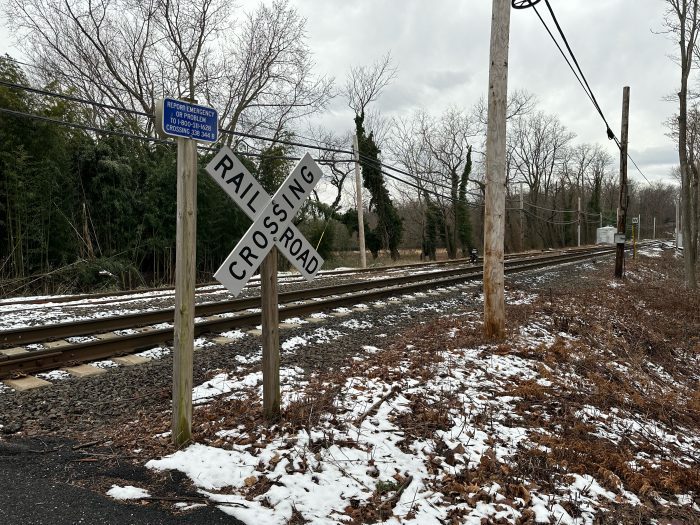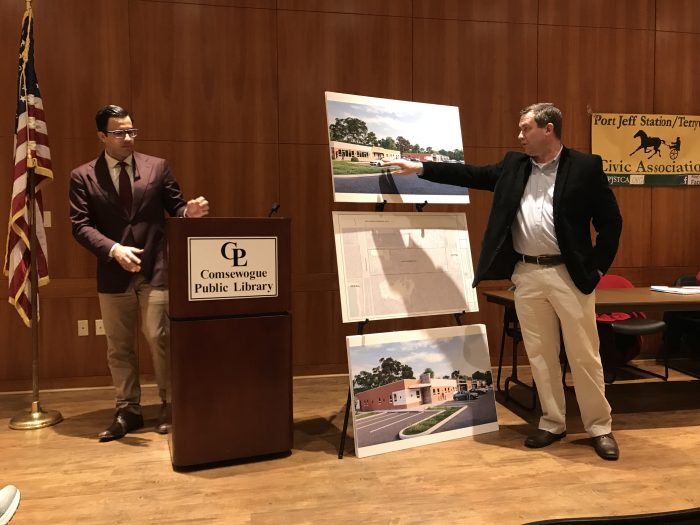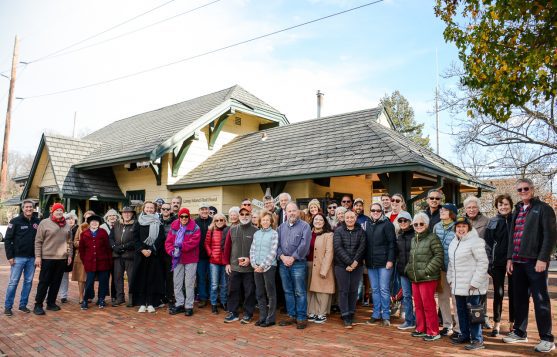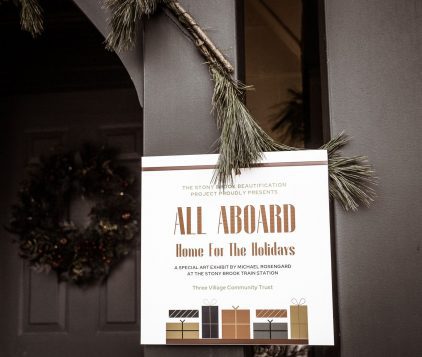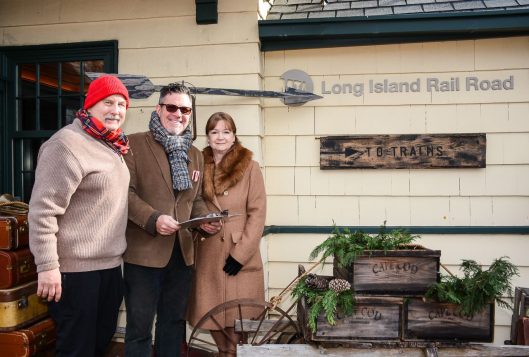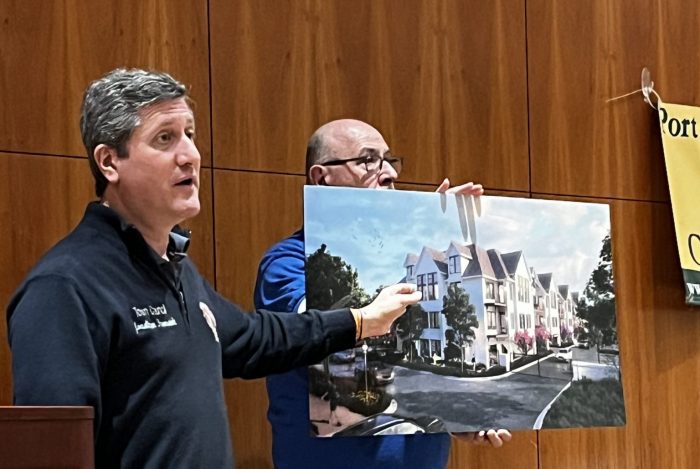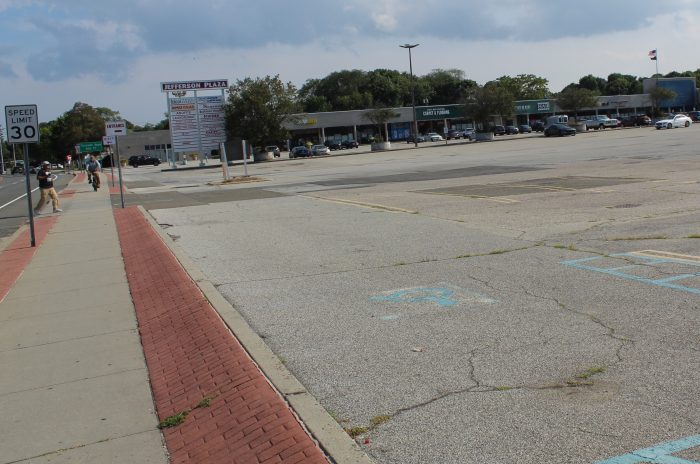By Samantha Rutt
Residents gathered at the Setauket Fire Station on Main Street Feb. 5 for the Three Village Civic Association’s first meeting of the calendar year. The meeting agenda featured a presentation by local Town of Brookhaven Councilmember Jonathan Kornreich (D-Stony Brook). The event served as a platform for the councilmember to provide vital updates on community projects, initiatives and future plans, while eliciting engagement and feedback from attendees.
With a focus on transparency and community involvement, the meeting kicked off with an overview of ongoing and upcoming projects aimed at enhancing the quality of life for residents across Three Village. Kornreich mentioned the emergence of a “Founder’s Park” to be constructed near 25A and Gnarled Hollow Road. The park, still in its infancy planning stage, would be set on the presumed landing place of Setauket’s founders. In the park would feature a playground, to be donated by a local family currently fundraising, as well as the historic Roe Tavern, eventually to be relocated to the park’s assumed location. While still in the early stages, the park plans to serve as a place for the community to gather and celebrate its rich history.
Among the key topics discussed was the progress of various infrastructure projects, including sewer system infrastructure. The councilmember emphasized the importance of prioritizing infrastructure investments to ensure the safety and well-being of residents while fostering economic growth and development.
Kornreich explained the necessity of more wastewater infrastructure within the bounds of his district, primarily along 25A. The councilmember further clarified that the installation of sewers and their intended placement is simply theoretical at the moment.
“In theory, the purpose of the sewer study is to determine the feasibility of running a sewer line from the university all down 25A, including Stony Brook village, and connecting to the Port Jeff STP [sewage treatment plant],” he said.
The potential installation of this sewer system would enhance environmental protection for the Three Village community.
Additionally, attendees were briefed on community related initiatives, including changes to signage displayed along the roadside, the Commercial Redevelopment District legislation, the abolition of both Town of Brookhaven’s accessory apartment and planning boards, and the Highway Department’s upgrades.
During his presentation, Kornreich laid out the improvements to local highways sharing that the Highway Department will soon install new antique lighting along 25A over the next two years. The department also plans to combat consistent flooding seen along Dyke Road by pitching and adjusting the roadway accounting for overflow of water.
Kornreich also mentioned the town’s Community Choice Aggregation program, helping the community to understand the realities and complexities of this program. The program’s goal is to help residents who use natural gas to save by opting for a fixed rate. Kornreich explained that all town residents were automatically opted into this program, though since the adoption the National Grid rates have come in under that of the fixed rate.
“I realize that it’s not a good deal at the moment because the National Grid price, which fluctuates, has on average been much lower than the fixed CCA price since the inception of the CCA,” Kornreich explained. “You can opt in and out of the CCA whenever you want.”
Throughout the presentation, attendees had the opportunity to engage with the councilmember, asking questions and providing feedback on specific projects and initiatives. The interactive nature of the meeting facilitated meaningful dialogue.
As a former president of the civic association, Kornreich expressed his gratitude in connecting with residents and sharing updates on the ongoing efforts to enhance the community. He emphasized the ready availability of his office and staff, calling on residents to stay informed and actively participate in shaping the future of Three Village.
For those unable to attend the meeting, information and updates on the community and related civic association matters can be found at www.3vcivic.org.




